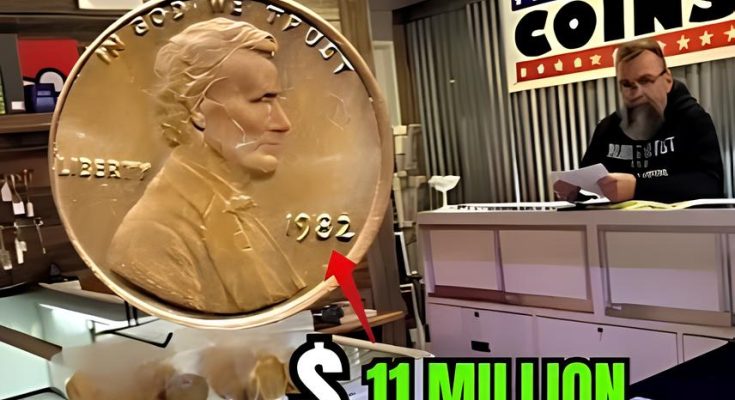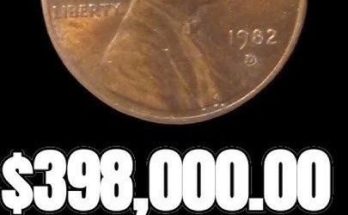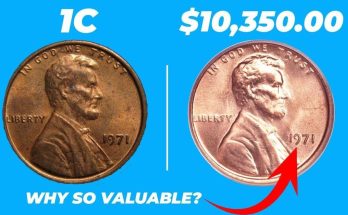👑 Top 10 Dirty Pennies: Rare Lincoln Penny Coins That Could Make You a Millionaire! 💰
The Hunt Begins: Why Your Pocket Change is a Gold Mine
The search for rare coins often begins with the humble penny. Since its introduction in 1909, the Lincoln Cent has been minted by the hundreds of billions, yet a small number of production errors and low-mintage dates have made certain specimens legendary. The greatest treasure trove in numismatics may not be in a museum vault, but sitting in a dusty jar of coins right under your nose. The phrase “dirty pennies” is especially relevant, as many of the most valuable errors—struck decades ago—have circulated extensively before their rarity was known. Do not clean them, as this drastically reduces their value; simply learn what to look for!
Here are the most important Lincoln Pennies that every collector—or curious change-checker—should hunt for, including those rare finds that have genuinely sold for millions of dollars.
The Million-Dollar Mistakes: Composition & Doubled Die Errors
These rarities are at the top of the collecting pyramid, commanding six-figure, and in some cases, seven-figure prices.
1. The 1943 Copper (Bronze) Penny
During World War II, copper was a critical war material. In 1943, the U.S. Mint switched the penny’s composition to zinc-coated steel (making them silver-colored and magnetic). However, a small number of copper planchets from 1942 were accidentally struck with 1943 dies.
-
Detail to Look For: The 1943 date on a copper-colored coin. If you find one, a simple magnet test is the first step: a genuine 1943 copper penny will not stick to a magnet, while the common steel ones will.
-
Value: Only around 40 are known to exist across all three mints. The finest examples have sold for over $1.7 million.
2. The 1944 Steel Penny
The error was reversed in 1944. The Mint switched back to copper, but a few leftover steel planchets from the previous year were mistakenly struck with the 1944 die.
-
Detail to Look For: The 1944 date on a silver-colored, steel coin. Like the 1943 copper, this coin will stick to a magnet.
-
Value: These are also worth enormous sums, with top examples selling for hundreds of thousands of dollars.
3. The 1955 Doubled Die Obverse (DDO)
The most famous and recognizable error coin in the world. A major hubbing mistake caused dramatic doubling on the coin’s front side.
-
Detail to Look For: Clear, unmistakable doubling of the letters in “LIBERTY” and the motto “IN GOD WE TRUST,” and especially the date, “1955.”
-
Value: Even in circulated, “dirty” condition, these are worth over $1,500. High-grade pieces have sold for over $100,000.
4. The 1969-S Doubled Die Obverse (DDO)
A modern error that is exponentially rarer than the 1955 DDO. The doubling is extremely prominent on the obverse lettering and date.
-
Detail to Look For: Strong doubling on “LIBERTY” and the date “1969.” Crucially, the “S” mint mark should not be doubled.
-
Value: Fewer than 100 are known. Prices for high-grade examples have reached over $125,000.
Other Key Dates and Varieties to Scrutinize
While the errors above are the biggest prizes, many other Lincoln cents carry surprising four- and five-figure values:
-
1909-S VDB (Wheat Cent): This famous “key date” has the lowest mintage of the entire series. Look for the small “S” mint mark under the date and the initials “V.D.B.” on the reverse. Circulated examples start at hundreds of dollars.
-
1914-D (Wheat Cent): Another classic low-mintage key date. Look for the “D” mint mark under the date. High-grade coins can sell for tens of thousands of dollars.
-
1922 “Plain” (No D) Cent: Due to a heavily abraded die, the “D” mint mark was polished off. The “22” in the date is typically weak.
-
1983 Doubled Die Reverse: Look for doubling on the letters of “ONE CENT” on the reverse. High-grade pieces have sold for over $15,000.
-
1992 Close AM (Memorial Cent): The space between the “A” and “M” in “AMERICA” on the reverse is extremely narrow. This variety can sell for over $20,000.
-
1999 Wide AM (Memorial Cent): The reverse is a reverse die that was intended for proof coins. The space between the “A” and “M” in “AMERICA” is wide, resembling the 1993-1998 business strike. This famous error has sold for over $138,000.
The world of Lincoln cents is full of surprises. Every “dirty penny” you pick up holds the potential for extraordinary wealth.



